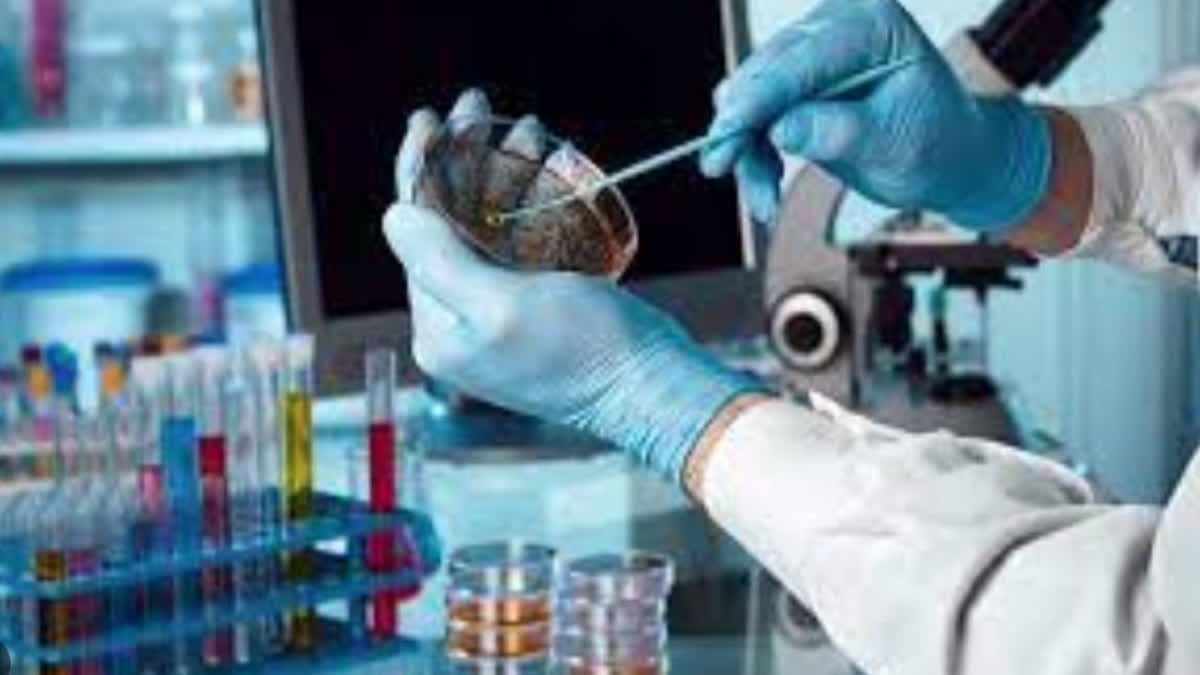New Delhi: With an aim to minimise the high degree of import dependence on Active Pharmaceutical Ingredients (API) and Key Starting Materials (KSMs) by bringing an inclusive development, the Centre on Tuesday launched the National Policy on Research and Development and Innovation and Scheme for Promotion of Research and Innovation in Pharma MedTech Sector (PRIP).
Also read: US pharma industry seeks R&D policy for India's pharmaceutical sector
The policy, launched by Union Minister for Chemical and Fertilizer Mansukh Mandaviya also aims to boost the relatively low pace of development of biologics, biosimilars and other emerging products and trends. Implementation of the policy will also counter the low technological capabilities in high-end scanning and imaging equipment and promote the need to generate acceptable scientific evidence for mainstreaming of traditional medicines.
Currently Indian pharma constitutes 3.4 percent market share of the global pharma industry. As per the government, if the industry adopts a business-as-usual approach, the market value would grow to around 108 billion USD by 2030 with 11 percent Compound Annual Growth Rate (CAGR).
The global pharma market, positioned at 1230 bn USD in 2020, is expected to grow to 3206 bn USD by 2030 at a Compound Annual Growth Rate of 8.5 percent. It is envisioned that a focus on growth enablers can help India grab a 4 percent market share reaching 130 bn USD market size and a 5 percent market share will position India at 160 bn USD.
Over the past few decades, disease profile and demographic profile has been evolving in India and new therapies are emerging globally. These include Precision medicines, cell and gene therapy, greater reliance on biological products and use of Digital tools. Most of the medicines in these categories are imported.
“A policy to foster Research and innovation in a focused manner would help enhance domestic availability and affordability of these categories of new age therapeutics. At the same time, development of affordable and high quality innovative drugs and devices would enable India to enhance its contribution to Global Health goals as part of the philosophy of Vasudaiva Kutumbakam,” a notification issued by the Ministry of Chemical and Fertilizers stated.
The COVID-19 pandemic has brought to the forefront the role of innovation in expanding the scale, access and affordability of healthcare products. The role of innovation in providing vaccines and medical equipment at scale and of quality that can work in countries at different stages of development has been critical to the management of the pandemic. The benefits of repurposing drugs and the proliferation of Monoclonal antibodies (MABs) have also highlighted the role of innovation in tackling global emergencies.
The policy further said that a larger share of global value capture (40 percent of a market of 6.65 trillion USD) in the pharmaceutical sector lies in innovation- based products. A policy to promote drug discovery and innovation will unlock this value and will also enhance the industry’s contribution to Indian economy (additional USD 10-12 Bn ((Rs 82,000 to Rs 98,400 crores) in exports every year) and create a large pool of white-collar jobs to enhance India’s differentiation vis a vis other developing economy.
The policy categorised five different objectives including enabling rapid drug discovery and development and innovation in medical devices by streamlining of regulatory processes; incentivizing private sector investment in research and exploring various funding mechanisms – Budgetary support, Venture capital, CSR funding, etc. and fiscal incentives to support innovation.
The policy also aims to strengthen the R & D ecosystem through increased collaboration between Industry and Academia, besides enabling coordination among the existing policies and programs of various departments/ agencies/ institutes in order to develop mechanisms to dovetail research as per the requirement of the sector. It also aims to facilitate the rapid development and availability of innovative drugs and medical devices in India.
The policy also aims at incentivizing investment in Innovation. The Pharmaceutical and Medical Devices sectors are being encouraged to build global champions by enhancing domestic manufacturing capacities. Production Linked Incentive (PLI) Schemes cover investments and production of biopharmaceuticals, patented drugs, complex generics, specific high-end segments of medical devices such as Cancer care/ Radiotherapy, Radiology & Imaging, Anaesthetics & Cardiorespiratory equipment etc.
Significantly, a High-level Task Force will be set up in the Department of Pharmaceuticals under the Minister for Chemicals and Fertilizers to guide and review the implementation of the Policy. The Task Force will draw upon resource persons from Departments and Organizations related to the implementation as the success of the policy requires coordinated action by several agencies.
The Policy will be supported by a ten-year Strategy and action plans that will spell out the policy and programmatic interventions required from time to time within the Policy. To further strengthen the research infrastructure, the policy will establish Centres of Excellence (CoEs) in the seven existing NIPERs at Mohali, Ahmedabad, Hyderabad, Guwahati, Kolkata, Hajipur and Raebareli at a tentative cost of Rs 700 crore over a period of five years.



